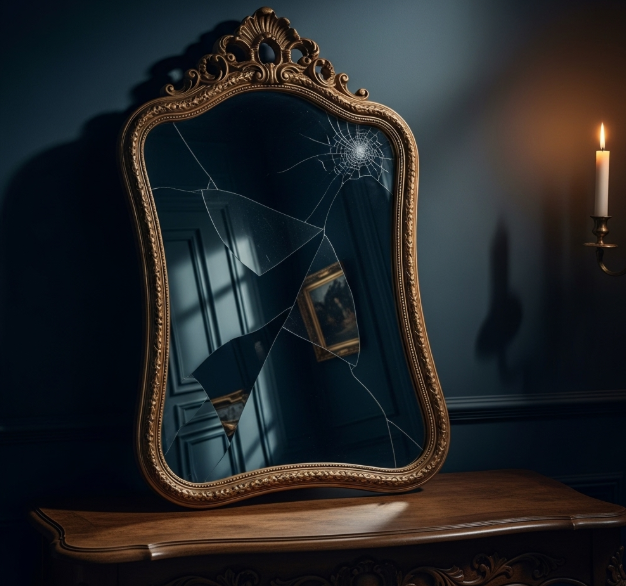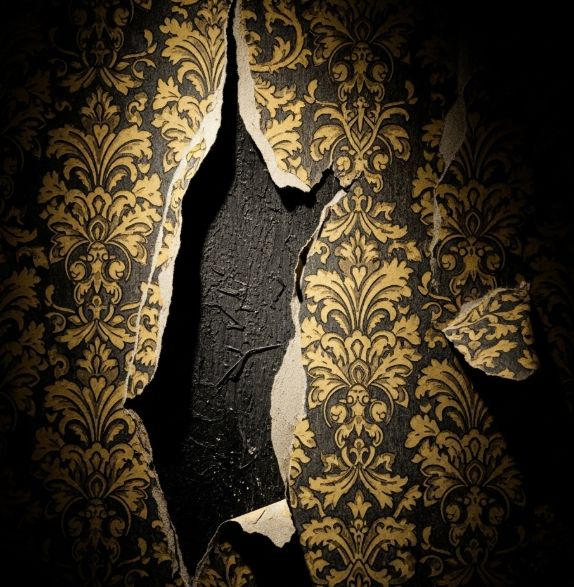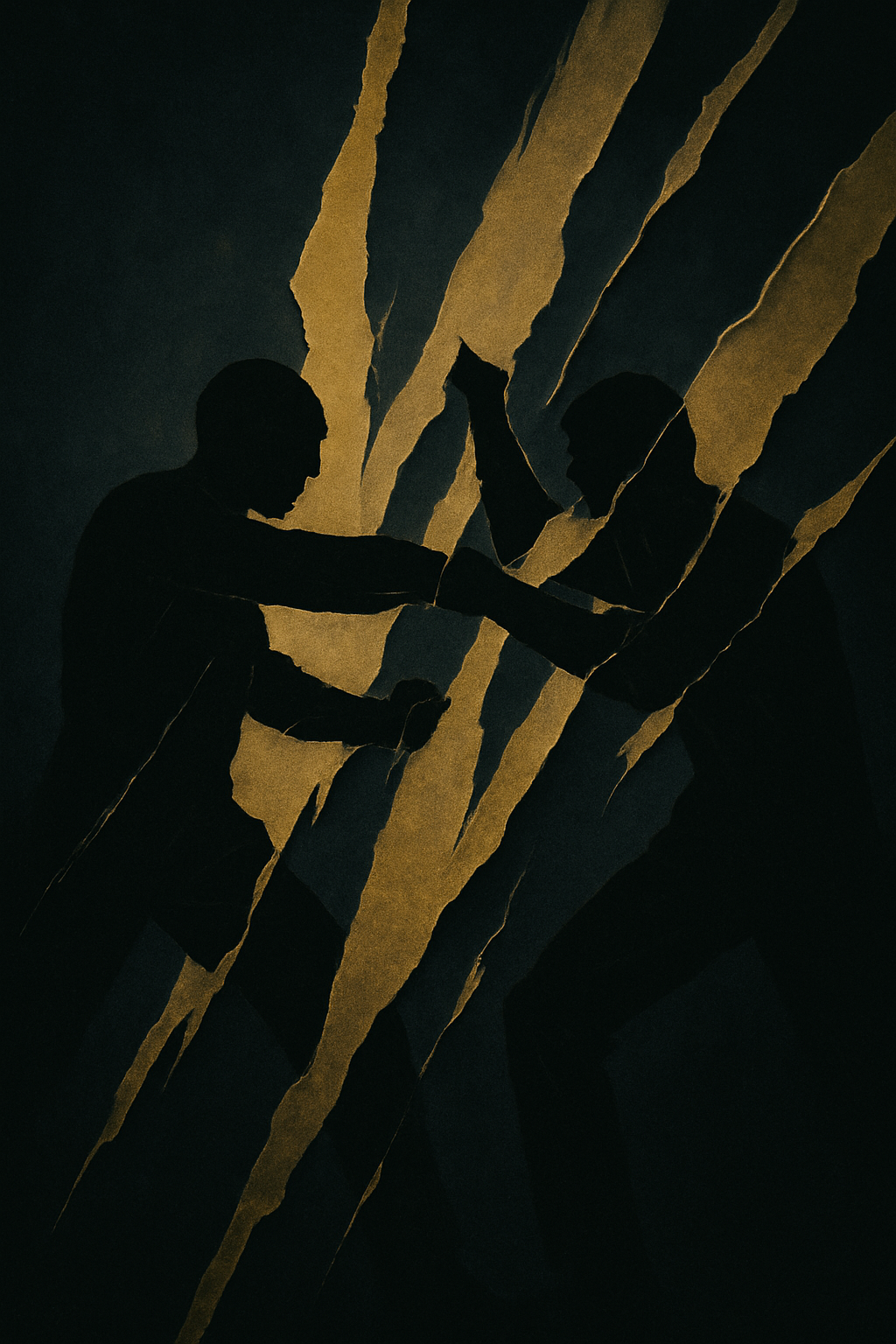What Your Love of "The Yellow Wallpaper" Says About Your Suppressed Shadow
Many of us have read Charlotte Perkins Gilman's masterpiece "The Yellow Wallpaper" in school. Some of us gawked at the lunacy of what feels like medieval treatment of women and the total ignorance of mental health, even in patently physiological cases like postpartum depression.
But if you like this story, it says so much more than you might think.
If the woman in 'The Yellow Wallpaper' haunts you—if you've read the story multiple times, recommended it to friends, or felt an uncomfortable recognition while reading—your psyche is trying to tell you something essential about power, voice, and the parts of yourself you've learned to hide.
This isn't literary analysis. This is psychological divination through story—examining what your deep connection to this narrative reveals about your inner landscape, your relationship patterns, and the shadow work calling to you.
The Gaslighting Mirror
One of the key features of this story is the lack of trust between the nameless main character and her husband. While this is nothing particularly exciting in and of itself, what's unique about their situation is the blatant gaslighting that occurs. Examine, for instance, the following paragraph:
"If a physician of high standing, and one's own husband, assures friends and relatives that there is really nothing the matter with one but temporary nervous depression—what is one to do?"
The woman knows something is wrong with her; it's her body, after all. She knows her own body, her own experience, her own reality. But her husband—the authority figure—is convinced that there's no reason for her to feel the way she does. In short, if it's beyond his comprehension, it must not be true.
He responds by insisting, throughout the story, that she's wrong and must be mistaken.
The implications for the admirer of this story is that there are forces in one's life which have made them feel diminished. Even though they're certain that something is one way, there have been authority figures in their life who make them feel like their own mind is not their own. If you love this story, perhaps you've had a controlling parent who's insisted that your passions are just a phase, or that your love interests aren't serious. Something in your internal world has been questioned; your own autonomy over the self has been called into question.
The Pattern You Hate Most
This weathering of the soul leads to self-hatred. The wallpaper is the woman's internal self, and she loathes it; she describes it in derogatory terms. If you identify with the woman in the story, it's possible you struggle with your own self-image, likely as a result of that authority figure wearing you down. It's possible it was a parent or a significant other with disproportionate power who did significant damage to your sense of self. Take these quotes, for instance:
““The color is repellent, almost revolting; a smouldering unclean yellow, strangely faded by the slow-turning sunlight.”
”It makes me think of all the yellow things I ever saw—not beautiful ones like buttercups, but old foul, bad yellow things.””
The woman sees herself in the wallpaper later in the story, but sees nothing positive in it. It suffocates her; those who relate to her might themselves feel like their own skin suffocates them. This is all a result of the tiny traumas inflicted on her by the authority figure's gaslighting and persistent doubt. His absence and lack of support (particularly of her writing—clearly the woman's passion) indicate an oppressive authority figure who alternates between lovebombing and grinding down his partner. As a result, the woman hides her passion, as we often do when ours are unsupported—or worse, actively dismissed.
The woman rejects the wallpaper because she's been taught to reject her wildness, her freedom, her sexuality. The patterns are wild and so is she. It makes her feel trapped, because she can't escape herself, but society has made her feel like she needs to "straighten out" in order to be "proper." Your connection to this story is likely paralleled with this feeling. If the quote, "Well-behaved women rarely make history," resonates with you at all, it's likely you carry resentment resulting from having your behavior oppressed.
When Shadows Turn Violent
Carl Jung says, "What we resist in ourselves, or deny, does not go away. It goes underground, into the shadow, where it acquires an autonomous life." So too we see this with the woman; she suppresses her "creeping" for as long as she can, but the pressure built up of that suppression is such that it threatens violent exposure. We see this with the description of the wallpaper:
"The pattern lolls like a broken neck and two bulbous eyes stare at you upside down."
"They suddenly commit suicide—plunge off at outrageous angles, destroy themselves in unheard of contradictions."
These descriptions suggest the woman feels such hatred and resentment toward herself that they threaten to spill into violence. A person who deeply loves this story might have their own history of self-harm, however minor—even if it manifests as persistent negative self-talk. Unable to lash out at the world around them and feeling trapped by their own Self, their resentment pulls inward. This is also a result of the gaslighting they've likely been exposed to; the perpetrators of their negative self-image aren't to blame. Rather, they believe that their Self is to blame.
Your connection to this story suggests you carry the psychological imprint of gaslighting—whether from family, relationships, or society. You've learned to suppress your intuition, your anger, your needs, because expressing them was deemed 'hysterical,' 'too much,' or 'unreasonable.'
Integration, Not Destruction
The woman's reaction to this is to succumb to her shadow. She becomes the "Creeping Woman," allowing herself to become the worst version of her suppressed identity. However, what we can learn from this story is that suppression is not the solution. If you love this story, then your shadow is trapped and screaming to be let out. It wants expression, not suppression.
I challenge you to do one uncomfortable thing that you've always wanted to do today. One small thing you've been told not to do by whatever figure made you feel small and powerless. Don't do it out of defiance—your intention is important here, as the woman in the wallpaper crept out of defiance of society's expectations—but rather out of celebration of yourself.
Furthermore, consider your relationships with others. Your connection to this story often reflects unfinished business with power dynamics in relationships. Look at your romantic patterns: Do you find yourself with partners who dismiss your reality? Do you shrink yourself to maintain peace? The woman's relationship with John mirrors how many of us have learned to relate to masculine energy—whether in partners, bosses, or father figures.
Something else to consider: how do you relate with yourself? How do you relate to the anima/animus—or the feminine in the masculine, and the masculine in the feminine—within your own psyche? Do you find yourself cutting parts of that identity in order to fit in your workplace or your relationships? Or perhaps you magnify them—puffing them up so that you're taking on a role rather than a genuine expression of your internal world.
Your Shadow Work Invitation
Journal questions:
Who in my life has made me feel trapped? How have they made me feel trapped, and how have I internalized this?
How do I hurt myself as an expression of this entrapment?
What are three empowering things I can do for myself? Think of things you've been told aren't "proper," yet you've always wanted to do.
Tarot spread:
What part of yourself have you learned to find "repellent"?
Who in your life has made you question your own reality?
What creative expression or passion did you learn to hide?
How do you "creep" through your own life instead of claiming space?
Tarot card: Strength Believe in yourself and trust that you're enough. When you're told you're too big, it's because the cage is too small.
The stories that disturb us most deeply are often the ones trying to heal us. Your love of 'The Yellow Wallpaper' isn't random—it's your psyche's invitation to stop creeping and start claiming. The rage, the wildness, the truth you've been taught to hide? It's not pathology. It's medicine waiting to be integrated.




